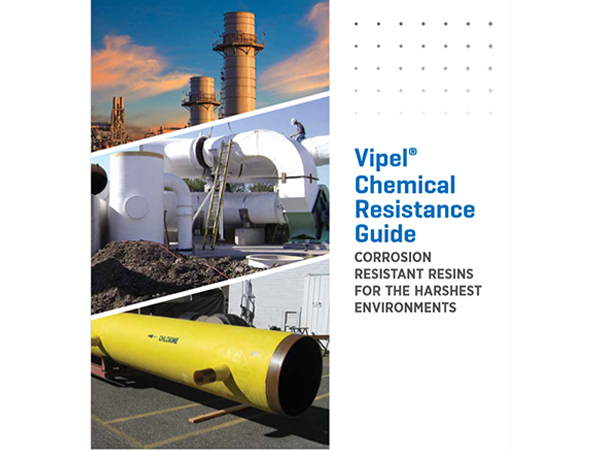
-
 Afrikaans
Afrikaans -
 Albanian
Albanian -
 Amharic
Amharic -
 Arabic
Arabic -
 Armenian
Armenian -
 Azerbaijani
Azerbaijani -
 Basque
Basque -
 Belarusian
Belarusian -
 Bengali
Bengali -
 Bosnian
Bosnian -
 Bulgarian
Bulgarian -
 Catalan
Catalan -
 Cebuano
Cebuano -
 China
China -
 China (Taiwan)
China (Taiwan) -
 Corsican
Corsican -
 Croatian
Croatian -
 Czech
Czech -
 Danish
Danish -
 Dutch
Dutch -
 English
English -
 Esperanto
Esperanto -
 Estonian
Estonian -
 Finnish
Finnish -
 French
French -
 Frisian
Frisian -
 Galician
Galician -
 Georgian
Georgian -
 German
German -
 Greek
Greek -
 Gujarati
Gujarati -
 Haitian Creole
Haitian Creole -
 hausa
hausa -
 hawaiian
hawaiian -
 Hebrew
Hebrew -
 Hindi
Hindi -
 Miao
Miao -
 Hungarian
Hungarian -
 Icelandic
Icelandic -
 igbo
igbo -
 Indonesian
Indonesian -
 irish
irish -
 Italian
Italian -
 Japanese
Japanese -
 Javanese
Javanese -
 Kannada
Kannada -
 kazakh
kazakh -
 Khmer
Khmer -
 Rwandese
Rwandese -
 Korean
Korean -
 Kurdish
Kurdish -
 Kyrgyz
Kyrgyz -
 Lao
Lao -
 Latin
Latin -
 Latvian
Latvian -
 Lithuanian
Lithuanian -
 Luxembourgish
Luxembourgish -
 Macedonian
Macedonian -
 Malgashi
Malgashi -
 Malay
Malay -
 Malayalam
Malayalam -
 Maltese
Maltese -
 Maori
Maori -
 Marathi
Marathi -
 Mongolian
Mongolian -
 Myanmar
Myanmar -
 Nepali
Nepali -
 Norwegian
Norwegian -
 Norwegian
Norwegian -
 Occitan
Occitan -
 Pashto
Pashto -
 Persian
Persian -
 Polish
Polish -
 Portuguese
Portuguese -
 Punjabi
Punjabi -
 Romanian
Romanian -
 Russian
Russian -
 Samoan
Samoan -
 Scottish Gaelic
Scottish Gaelic -
 Serbian
Serbian -
 Sesotho
Sesotho -
 Shona
Shona -
 Sindhi
Sindhi -
 Sinhala
Sinhala -
 Slovak
Slovak -
 Slovenian
Slovenian -
 Somali
Somali -
 Spanish
Spanish -
 Sundanese
Sundanese -
 Swahili
Swahili -
 Swedish
Swedish -
 Tagalog
Tagalog -
 Tajik
Tajik -
 Tamil
Tamil -
 Tatar
Tatar -
 Telugu
Telugu -
 Thai
Thai -
 Turkish
Turkish -
 Turkmen
Turkmen -
 Ukrainian
Ukrainian -
 Urdu
Urdu -
 Uighur
Uighur -
 Uzbek
Uzbek -
 Vietnamese
Vietnamese -
 Welsh
Welsh -
 Bantu
Bantu -
 Yiddish
Yiddish -
 Yoruba
Yoruba -
 Zulu
Zulu
Durable FRP Underground Tanks for Efficient Storage Solutions
Understanding FRP Underground Tanks An Essential Component for Modern Infrastructure
In recent years, the demand for durable and reliable storage solutions has significantly increased across various industries. One of the most effective solutions that have emerged is the use of Fiberglass Reinforced Polymer (FRP) underground tanks. Offering numerous advantages over traditional storage tanks, FRP underground tanks are becoming a vital component in sectors such as fuel storage, wastewater management, and chemicals.
What is FRP?
FRP is a composite material made from a polymer matrix reinforced with fibers, typically glass. This combination provides enhanced strength, durability, and corrosion resistance compared to conventional tank materials like steel or concrete. The lightweight nature of FRP also enables easier installation and transportation, making it an ideal choice for underground applications.
Key Advantages of FRP Underground Tanks
1. Corrosion Resistance One of the most significant benefits of FRP tanks is their resistance to corrosion. Traditional metal tanks can corrode over time, especially when storing aggressive liquids. In contrast, FRP tanks are not susceptible to rust or chemical degradation, ensuring longevity and reliability.
2. Lightweight and Easy to Install FRP tanks are much lighter than their concrete or metal counterparts. This characteristic not only reduces transportation costs but also simplifies the installation process. Contractors can easily maneuver and position FRP tanks, facilitating quicker project completion.
3. Lower Maintenance Costs Due to the non-corrosive nature of FRP, maintenance requirements are greatly reduced. Operators can save on both time and labor costs since FRP tanks typically require less frequent inspections and repairs.
frp underground tank

4. Environmental Protection With the increasing concern regarding environmental safety, FRP underground tanks offer an eco-friendly solution. Their leak-proof design helps minimize the risk of hazardous materials contaminating soil and groundwater. Many FRP tanks also come equipped with secondary containment features, further enhancing their environmental protection capabilities.
5. Versatile Applications FRP tanks can be used for a variety of applications, including the storage of fuels, oils, chemicals, and wastewater. Their customizable design allows for varying shapes and sizes, meeting the specific needs of different industries and applications.
Installation and Compliance
While the benefits of FRP underground tanks are substantial, proper installation is crucial to maximize their advantages. It’s essential to ensure that the installation meets local regulatory requirements, including the National Fire Protection Association (NFPA) standards and Environmental Protection Agency (EPA) guidelines. Working with experienced professionals can help ensure compliance and safety throughout the installation process.
Future Trends
As industries continue to evolve, the demand for advanced storage solutions like FRP underground tanks is expected to grow. The increasing focus on sustainability and environmental protection will likely drive further innovation in materials and designs. New developments may include enhanced monitoring systems for leak detection and advanced composite materials that offer even greater strength and durability.
Conclusion
FRP underground tanks represent a significant advancement in storage technology, combining durability, safety, and environmental responsibility. As businesses seek efficient and reliable solutions for their storage needs, FRP tanks are poised to play a critical role in modern infrastructure development. By embracing this versatile technology, industries can enhance their operational efficiency while also contributing to a more sustainable future. Whether used for fuel, chemicals, or wastewater, FRP underground tanks are undoubtedly an essential component of contemporary storage solutions.
Latest news
-
Exploring the Benefits of Top Hammer Drifter Rods for Enhanced Drilling PerformanceNewsJun.10,2025
-
High-Precision Fiberglass Winding Machine for GRP/FRP Pipe Production – Reliable & Efficient SolutionsNewsJun.10,2025
-
FRP Pipes & Fittings for Shipbuilding - Corrosion-Resistant & LightweightNewsJun.09,2025
-
Premium FRP Flooring Solutions Durable & Slip-ResistantNewsJun.09,2025
-
Premium Fiberglass Rectangular Tanks Durable & Lightweight SolutionNewsJun.09,2025
-
Tapered Drill String Design Guide Durable Performance & UsesNewsJun.09,2025









